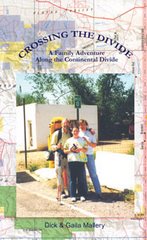
If you are a northbounder on the Continental Divide National Scenic Trail you last week on the trail will be spent in Glacier National Park. It will be 100+ miles of the most beautiful trail on the planet.
The breathtaking vistas of Glacier National Park draw visitors from all over the world.
This 1-million-acre national park preserves some of America’s most gorgeous country — including 106 miles of the Continental Divide — and the abundant wildlife that inhabits its wilderness.
Rochester, Minn. "We hiked to Avalanche Lake yesterday. I had my bear bells on, so I was protected."
Barnhart and her sister, Paula Muschinske of Great Falls, didn’t see any grizzly bears, but they were amazed by the wildlife that didn’t fear them.
"We had a deer pass us (within about 10 feet) on the trail," Barnhart said.
"And we’ve been watching the goats here," said Muschinske, standing on the Goat Lick Overlook along Highway 2 near Essex.
Each year, nearly 10 million out-of-state tourists make a pilgrimage to play in Montana.
Glacier and Yellowstone national parks attract more than 60 percent of summer visitors to the state — more than half of all Montana’s visitors each year, according to the National Parks Conservation Association.
It also found that tourism is estimated to account for 12 percent of Montana’s economic base.
Park visitors make up 75 percent of all expenditures by Montana’s summer visitors.
Summer visitors tend to stay in Montana longer if they visit a national park. Of more than 5.5 million summer visitors to Montana in 2001, 62 percent visited Glacier, Yellowstone or both parks, spending an average of five nights in Montana.
In Montana’s gateway communities, within roughly a 30-mile radius of a national park, visitors spend about $226 million a year, according to the report.
Roughly 1.6 million tourists pay to enter Glacier from June through September.
But it’s not just the out-of-staters. Many Montanans also flock to Glacier.
Glacier National Park has been revered by the Plains Indians for many generations.
Archeologists have found evidence of human activity in the Glacier Park area that dates back 10,000 years.
These early people may have been the ancestors of the Blackfeet, Salish and Kootenai Indians.
Meriwether Lewis came close to the southern tip of Glacier in 1806, checking how far north the Missouri River watershed extended.
White explorers kept searching for the perfect mountain pass through which to run a railroad line over the Rockies. Although many of the region’s Native Americans knew the location of Marias Pass, the Blackfeet guarded it closely.
In 1889, an explorer for the Great Northern Railway, John F. Stevens, finally figured out where Marias Pass lay. Marias was the lowest mountain pass between Canada and Mexico. Its low altitude and easy grade made it perfect for trains to cross the Continental Divide.
The mountains east of the Continental Divide were acquired from the Blackfeet in 1895 and designated a national wilderness forest preserve in 1900, opening it to mining.
President William Howard Taft signed the bill to establish Glacier as a national park in 1910.
"I know that we got robbed," said Blackfeet historian Curly Bear Wagner.
"But we’re thankful it is a national park because we have the migration of wildlife — the four-legged ones, the winged ones, and those that creep and crawl — they have a home," said Wagner.
Visitors to the park are equally grateful.
"This is incredibly beautiful," said Dana Smith of Salt Lake City. "Now I know why they call this the last best place."
The breathtaking vistas of Glacier National Park draw visitors from all over the world.
This 1-million-acre national park preserves some of America’s most gorgeous country — including 106 miles of the Continental Divide — and the abundant wildlife that inhabits its wilderness.
Rochester, Minn. "We hiked to Avalanche Lake yesterday. I had my bear bells on, so I was protected."
Barnhart and her sister, Paula Muschinske of Great Falls, didn’t see any grizzly bears, but they were amazed by the wildlife that didn’t fear them.
"We had a deer pass us (within about 10 feet) on the trail," Barnhart said.
"And we’ve been watching the goats here," said Muschinske, standing on the Goat Lick Overlook along Highway 2 near Essex.
Each year, nearly 10 million out-of-state tourists make a pilgrimage to play in Montana.
Glacier and Yellowstone national parks attract more than 60 percent of summer visitors to the state — more than half of all Montana’s visitors each year, according to the National Parks Conservation Association.
It also found that tourism is estimated to account for 12 percent of Montana’s economic base.
Park visitors make up 75 percent of all expenditures by Montana’s summer visitors.
Summer visitors tend to stay in Montana longer if they visit a national park. Of more than 5.5 million summer visitors to Montana in 2001, 62 percent visited Glacier, Yellowstone or both parks, spending an average of five nights in Montana.
In Montana’s gateway communities, within roughly a 30-mile radius of a national park, visitors spend about $226 million a year, according to the report.
Roughly 1.6 million tourists pay to enter Glacier from June through September.
But it’s not just the out-of-staters. Many Montanans also flock to Glacier.
Glacier National Park has been revered by the Plains Indians for many generations.
Archeologists have found evidence of human activity in the Glacier Park area that dates back 10,000 years.
These early people may have been the ancestors of the Blackfeet, Salish and Kootenai Indians.
Meriwether Lewis came close to the southern tip of Glacier in 1806, checking how far north the Missouri River watershed extended.
White explorers kept searching for the perfect mountain pass through which to run a railroad line over the Rockies. Although many of the region’s Native Americans knew the location of Marias Pass, the Blackfeet guarded it closely.
In 1889, an explorer for the Great Northern Railway, John F. Stevens, finally figured out where Marias Pass lay. Marias was the lowest mountain pass between Canada and Mexico. Its low altitude and easy grade made it perfect for trains to cross the Continental Divide.
The mountains east of the Continental Divide were acquired from the Blackfeet in 1895 and designated a national wilderness forest preserve in 1900, opening it to mining.
President William Howard Taft signed the bill to establish Glacier as a national park in 1910.
"I know that we got robbed," said Blackfeet historian Curly Bear Wagner.
"But we’re thankful it is a national park because we have the migration of wildlife — the four-legged ones, the winged ones, and those that creep and crawl — they have a home," said Wagner.
Visitors to the park are equally grateful.
"This is incredibly beautiful," said Dana Smith of Salt Lake City. "Now I know why they call this the last best place."












No comments:
Post a Comment